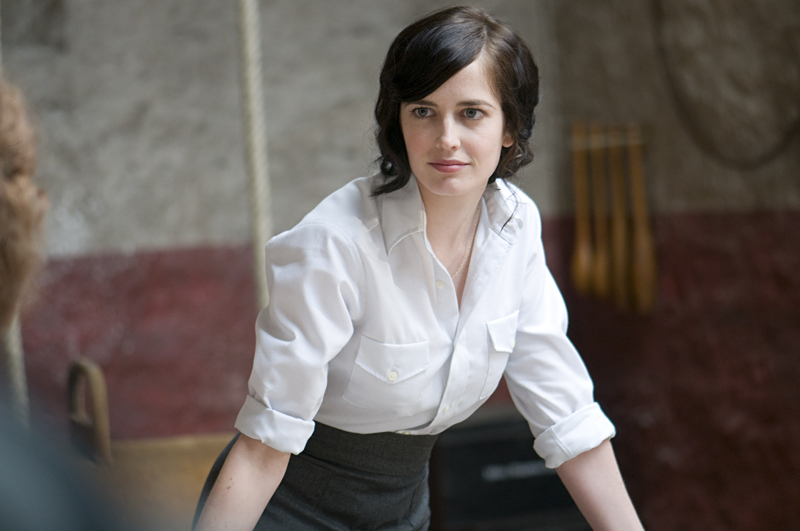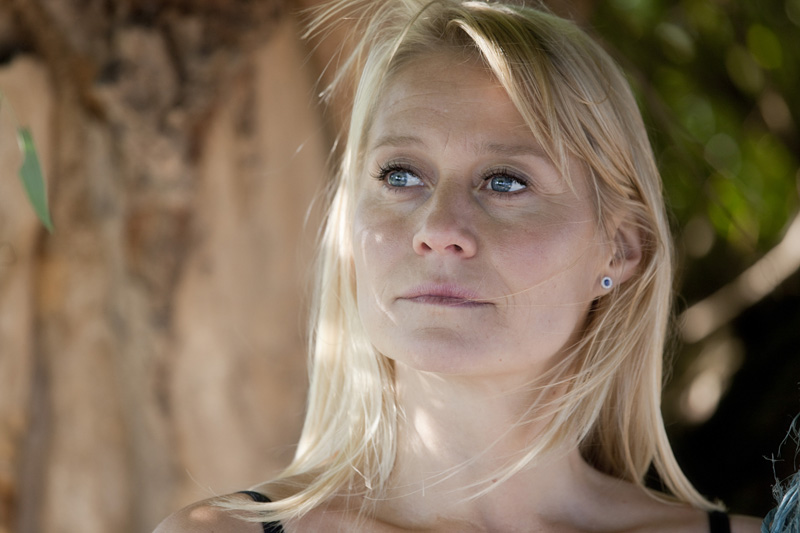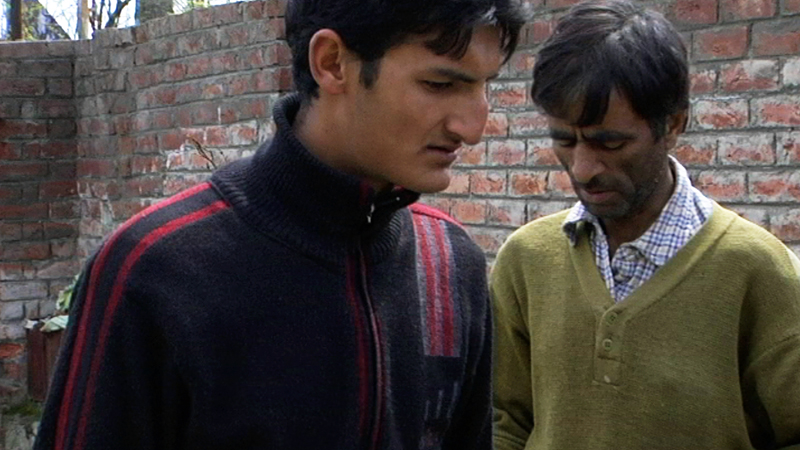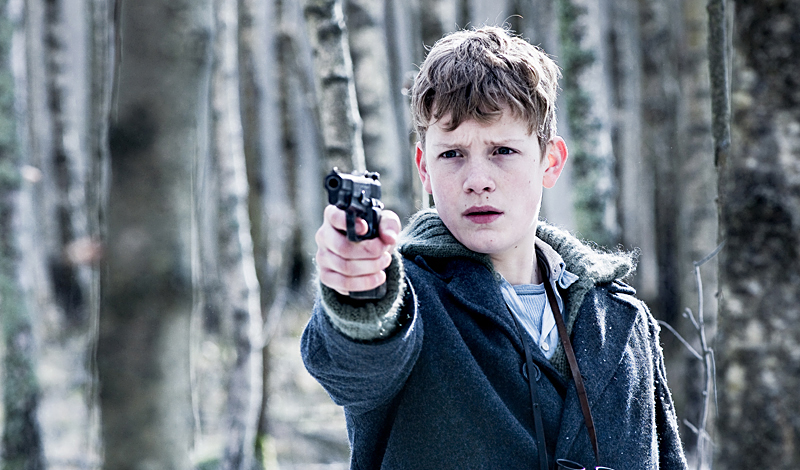Early on at this month’s South by Southwest Film Festival, I stopped telling people I met in Austin that this was my first visit to Texas. The answer was always the same: “This isn’t really Texas.” Well, it’s certainly not L.A., where I come from. Everything is bigger here, from the abundance of very tall people to a gargantuan Whole Foods (whose HQ is in Austin) that houses three cafes. The tree blossoms are deep purple, the weather extreme, and the natives preternaturally friendly and laid-back, right down to the waiter who volunteered to drive us back to our hotel at midnight because a lightning storm had caused a run on taxicabs.
Still, when it comes to retail architecture, Austin has succumbed to global homogeneity. Everywhere you turn, there are exposed-brick eateries serving kumquat-stuffed game hen on a bed of Israeli couscous, lofts going up a mile a minute, and the usual round of chain stores like Starbucks, Gap, and Benetton. Wandering around Austin, you could be in today’s hip downtown-anywhere—not just Los Angeles and New York, but Park City, Prague, Moscow, or Honolulu, all of which I’ve visited to attend film festivals, and all of which have convinced me that provincialism, for better and worse, is on its way out.
The lone blue spot on Texas’ redder-than-red map, Austin is the state’s multiculti liberal oasis, and nowhere more than at SXSW, which attracts thousands to its annual three-pronged festival. Flying in, I sat next to a pleasant young hi-tech whiz schlepping tons of software to SXSW Interactive. And my first night in town, the streets seemed full of short northern-English lads with strange hair—one of whom, hefting a six-pack in a hotel elevator, whispered very loudly in my ear that he was about to get very, very drunk—who were gearing up for the music festival that takes off as the film festival winds down. For all its burgeoning reputation as the new Sundance, the SXSW vibe is overwhelmingly casual, uncommercial, and youthful—even the film festival’s indefatigable producer, Matt Dentler, hasn’t yet hit 30. Aside from the opening-night movie, Scott Frank’s enjoyable The Lookout, and a lone screening of Judd Apatow’s much-anticipated new comedy, Knocked Up (opening June 1), the Hollywood presence was either sparse or unusually discreet.
Significantly, the most buzzed-about (and vigorously hyped) new film was Hannah Takes the Stairs, a self-consciously rough-hewn comedy credited to beloved SXSW regular Joe Swanberg. In fact, this entertainingly skittish piece about a romantically confused playwright who works her way through three of her colleagues, leaving behind a trail of low-key devastation, is a collaborative effort by its small cast, which includes Mark Duplass (The Puffy Chair) and Andrew Bujalski, whose excellent Funny Haha and Mutual Appreciation stand out as clear influences. Taken together, these loosely structured, minimally plotted movies, collectively made by what Bujalski has dubbed the “mumblecore movement,” speak to a fragile culture of impermanence and addled identity crisis.
To judge by their enthusiastic reception by audiences roughly the same age as the filmmakers, such films are coming to define the diffuse sensibility of a generation. Or at least its opinion makers, among them young bloggers from all over the country who, according to a lively film-blogging panel moderated by the IFC blog’s Alison Willmore, are a new breed of writer altogether. Many of them got into blogging because they’re filmmakers, and they define themselves more as commentators or town criers spreading the word than as reviewers. Far more than the fraternity of grumpy old print film critics, bloggers see themselves as part of a community that includes casts, crews, Internet idlers, and anyone else who will listen. Yet if this is a community, it’s one that bonds around alienation and incompleteness.
Hungry for an increasingly elusive youth market, distributors are nibbling at Hannah as we speak. The cast, especially Greta Gerwig—a funky blond glamour-puss in oversized glasses who plays Hannah—became a cult presence around the festival, notably through the very funny fake blooper trailers they made to accompany other screenings. I liked the movie fine, but found it slighter than Bujalski’s work, and I worry that just as Quentin Tarantino’s Reservoir Dogs unleashed a wave of dire knockoffs from novices less talented or simply less ready to make movies, so the mumblecores may open the sluice gates for a flood of young aspirants dying to tell us about their trying day at the office.
As a juror in the festival’s narrative-feature section, I can’t talk specifically about the competition films. But in or out of competition, the schedule featured a hefty quotient of nominal fiction features that ranged from the self-obsessed to the squishy (like the fatally good-natured Arranged, about two young women—one Jewish, the other Muslim—grappling with arranged marriages) to the downright mawkish. That’s a hazard of any regional film festival competing for world premieres with juggernauts like Sundance and Cannes, but particularly for one as heavily attended as SXSW is by baby filmmakers whose insights into subjects ranging from their own social inadequacies to heroin addiction are less than ready for public airing.
For those of us too long in the tooth for self-improvement, by far the strongest offerings at SXSW—as indeed at most current festivals—were in the nonfiction category. In Manufacturing Dissent, Canadian filmmakers Debbie Melnyk and Rich Caine tail Michael Moore during his Fahrenheit 9/11 tour, subjecting him to the same treatment he gave General Motors honcho Roger Smith in Roger & Me. They never scored the interview either, which is only one reason why Moore emerges from this fair-minded doc as a “holy roller” of the left with a ritzy lifestyle, a paper-thin skin, and a careless approach to the boundaries between fact and invention. Michele Ohayon’s Steal a Pencil for Me, which brings to life the memoir of a Holocaust survivor who found himself in a Dutch concentration camp with his wife and his girlfriend, threatens at first to be a cute Shoah love story, then expands into a broader and deeper examination of the often neglected fact that most came into the camps with less-than-perfect lives, and that survival there often trumped altruism. I liked Jennifer Venditti’s Billy the Kid, a sympathetic portrait of a troubled Maine teenager’s struggles for love and social acceptance, which took the Jury Award for Best Documentary.
But the film that stayed with me most was Michael Jacobs’ alternately riotous and properly appalling Audience of One, which tags along with Richard Gazowsky, a San Francisco evangelical minister on a disastrous quest to realize his dream of making a religious action movie. Gazowsky comes off as a huckster and a megalomaniac with a gift for rationalizing his dubious gambits as orders from on high. As it turned out, he’s also a pretty good critic. Asked at a post-screening Q&A what it felt like to watch this empathic but damning film, he said, “It’s like watching yourself go to the toilet.”








